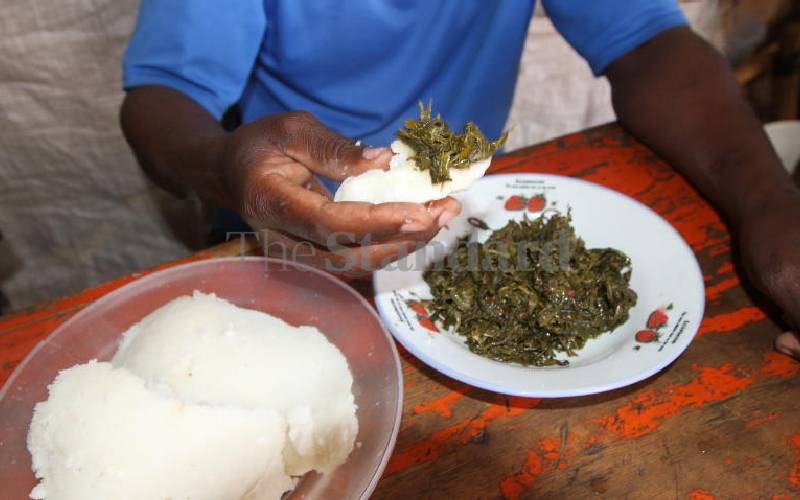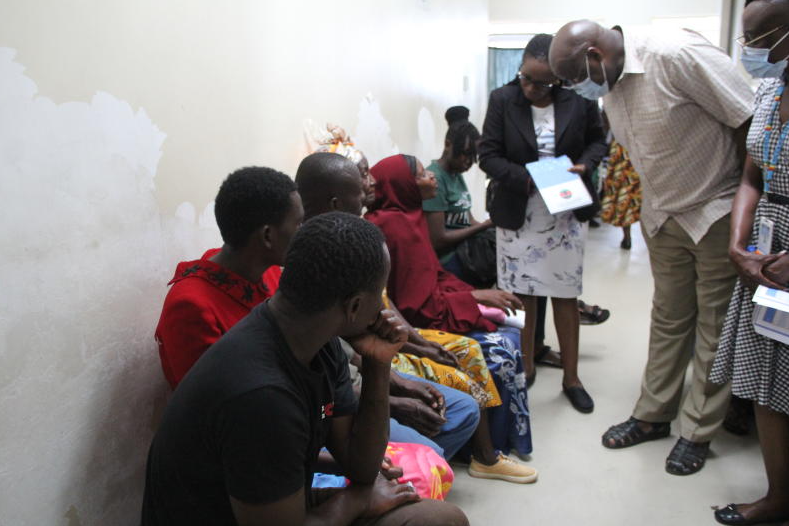
To those whom food is the love language, whose flavour and favour is drawn from a bountiful serving on the plate, there is a grave risk.
Kenyans need to be alert and beware that the foods they purchase from the supermarkets in major towns and in flea markets could be contaminated.
Actually, there is fear that this could be one of the reasons why cancer cases have been spiking in the country.
Samples collected from supermarkets in Nairobi, Kisumu, Nakuru, Eldoret, Nyeri, Kitale and Mombasa were found to be contaminated with aflatoxin and fumonisin.
Breakfast cereals, maize and maize flour, wheat and wheat flour, beans, legumes, nuts, rice and others are said to be contaminated by a whopping 50 percent.
Nairobi is said to have the highest amount of contaminated breakfast cereals with aflatoxin, posing a grave danger to the city's dwellers. A survey and studies conducted by scientists and researchers from the Kenya Medical Research Institute (KEMRI) revealed that there is widespread and significant levels of chronic mycotocin exposure through contaminated maize, flour, nuts and other foodstuffs.
- How to avoid foodborne illnesses this festive season
- The lesser-known causes of food poisoning that may ruin dessert
Keep Reading
"People may be exposing themselves to slow deaths by eating foods that are contaminated with poisonous moulds.
An expert in plant and crop health with Kenya Agricultural and Livestock Research Organisation (KALRO), who preferred to remain anonymous because she is not authorised to talk to the press says, "The poisonous moulds found in aflatoxins are sometimes not destroyed during food processing or while the foods are being cooked".
During the KEMRI study, a total of 600 samples consisting of maize and maize flour and wheat and wheat flour, beans, nuts and rice were sampled from Nairobi, Kisumu, Eldoret, Kitale and Eastern Province analysed and aflatoxin and fumonisin quantification done.
The dangerous chemicals were the main poisonous substances produced by mycotoxins. The foods tested were in supermarket shelves and from the open air markets - meaning the foods were on their way to gracing the tables of unsuspecting people," says Dr Christine Bii of KEMRI's Mycology Unit.
"All the samples taken and tested were found to be positive for aflatoxins. These are foodstuff ready to be consumed by the public so you can see the dangers Kenyans are exposed to," says the researcher.
The results indicated high incidence of aflatoxin contamination in maize flour in Nairobi, which stood at 48 per cent while Kisumu posted 18 per cent. Mombasa recorded 25 per cent.
Kisumu and Mombasa presented the least contaminated foodstuff in their open air markets and supermarkets.
The study by Kemri found Eastern Province to have 65 per cent and Nakuru least with four percent contamination of fumonisin.
"People must eat foodstuff that are not contaminated. Meaning, regular testing of foods in the market must be done by relevant government agencies to ensure and guarantee safety of the people. If over 50 per cent of foods in the supermarkets are contaminated, you can imagine the risk people are exposed to," says Dr Bii.
The study found that even oats, barley and rye, which are preferred by children, were found to be contaminated with aflatoxin and fumonisin.
Most Kenyans consume maize products almost on daily basis and this revelation is bound to cause consternation in a country that has been witnessing soaring cases of cancer, which has been one of the top killers in the country.
Breast, cervical, prostate cancers and that of the oesophagus have been listed as the most prevalent in the country, standing at 34 per 100,000, 25 per 100,000, 17 men per 100,000 and 9 per 100,000 respectively.
As people consume the most affected foods, hope lies in rice and wheat which, according to the KEMRI report, are less contaminated.
A survey by KEFRI shows chronic exposure to lower doses of mycotoxins is risky to liver, impaired immunity, and potential nutrient metabolism.
It is further recommending the establishment of a National Mycotoxin Control Surveillance programme to protect the public from hazards associated with mycotoxins exposure. Mycotoxins are associated with poor post-harvest handling of cereals and have caused deaths in Arid and Semi-Arid Lands (ASALs) in the past.
Aflatoxins are classes of toxic compounds produced by certain moulds found in food. They can cause liver damage and cancer. Foods which commonly contain the poisonous chemicals are groundnuts, tree nuts, maize, rice, figs, wheat and dried foods species, crude vegetable oils and cocoa beans.
It results from fungal contamination before and after harvest.
"Even though the research study did not link the presence of aflatoxin and fumonisin to the rising cases of cancer, Dr Rupen Haria, the Managing Director of Harley's Pharmaceutical, says there could be links since the poisonous chemicals in aflatoxin and fumonisin are cancer causing agents.
It is believed that the reluctance and failures by state agencies in dealing with quality assurance is to blame for the presence of contaminated foodstuff in our supermarkets and in open air markets.
"Kenyans care very little about public health matters, that is why the presence of counterfeit products is too much in the country," says Dr Rupen, a UK trained pharmacist.
The pharmacist advises the public to be on the lookout and ensure they buy food and pharmaceutical products from registered and genuine dealers.
Dr Rupen says the presence of counterfeits in Kenya worries genuine players in the pharmaceutical industry. He advises the Government and other stakeholders in pharmaceutical business to be vigilant and help the country get rid of fake products in the market.
The pharmacist adds that consumption of contaminated foodstuff and fake medicine is a gateway to hell, sicknesses and above all, death.
"Whereas our measures have achieved some level of success, a lot more still needs to be done," says Joseph Kioko, deputy head of testing unit at Kebs.
Kioko says effective implementation of Single Window System, a clearing platform shared by all agencies at the entry points, coupled with effective and efficient coordination among agencies charged with clearing of goods at entry points, has reduced the influx of substandard imports.
He adds that individual agencies or firms must avoid silo mentality while implementing their mandates.
Dr Rupen says eradication of sub-standard goods from the market requires concerted efforts by relevant Government agencies, consumer protection organisations and the consumers themselves.
 The Standard Group Plc is a multi-media organization with investments in media platforms spanning newspaper print
operations, television, radio broadcasting, digital and online services. The Standard Group is recognized as a
leading multi-media house in Kenya with a key influence in matters of national and international interest.
The Standard Group Plc is a multi-media organization with investments in media platforms spanning newspaper print
operations, television, radio broadcasting, digital and online services. The Standard Group is recognized as a
leading multi-media house in Kenya with a key influence in matters of national and international interest.











